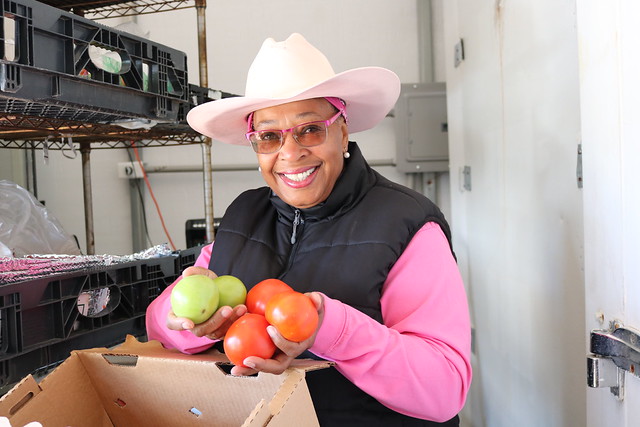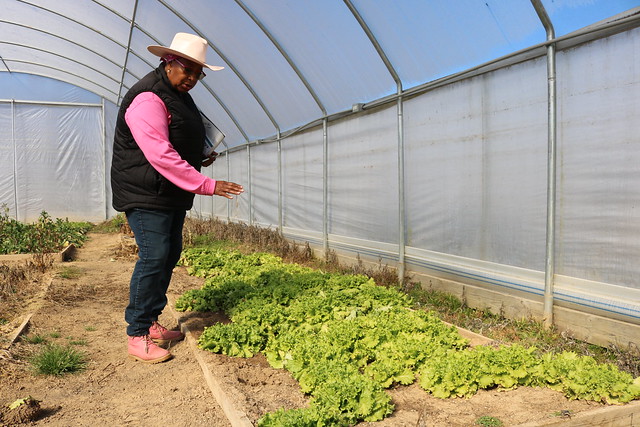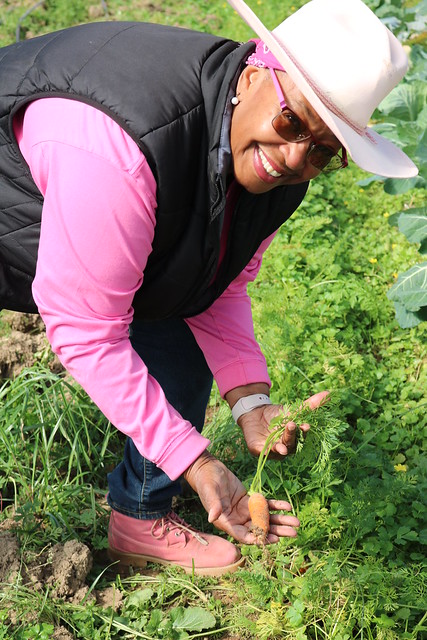
When Cindy Ayers-Elliott, Ph.D., left her career as a CEO and investment banker to become a Mississippi farmer, the last challenge she expected was freezing cold weather – especially snow and freezing temperatures.
Last winter brought record-low temperatures to Mississippi, and, along with it, the rare sight of two inches of snow covering the ground, icy roadways, and temperatures in the single digits. And farmers were especially impacted.
Ayers-Elliott’s Foot Print Farms was prepared. She used high tunnels, provided with financial assistance from the USDA Natural Resources Conservation Service, to protect her crops from the wintry mix, and make sure that her fresh, healthy produce continued to be available to her local community in Jackson.
Commonly called “hoop houses,” high tunnels are similar to greenhouses, but with crops planted directly in the soil. Foot Print Farms has six high tunnels. Their key benefit is protecting crops from cold weather to extend the growing season. They also improve plant and soil quality.

Ayers-Elliott's high tunnels have water-saving drip irrigation. “We watered the plants, so the water would keep some of the heat in the soil in case the sun came out," she said. "We had no idea we would have freezing temperatures for more than three days."
In each of Ayers-Elliott's high tunnels, you can see that her crops flourished despite the freezing temperatures. Because she marks each of her high tunnels for tracking and identification purposes, she is able to monitor the crops efficiently.
One of her high tunnels produces parsley, cilantro, and mint and other herbs. The crops benefit from the heat trapped inside the high tunnel, which is 10-15 degrees warmer than the outside air.
In another high tunnel, she is growing cover crops to feed her soil. "The beauty of the tunnels is that you have to rotate crops within the tunnel in order to rejuvenate the soil. We rotate cilantro, parsley, and other families of plants," said Ayers-Elliott.
Other high tunnels feature prepared grounds for new crops and kale, collard greens and carrots that she cultivates year-round.
She harvests her unripe tomatoes and stores them in her heating facility to ripen.
Although Ayers-Elliott had great success in sustaining her crops, some unfortunately did not survive.
"It was time for some things to die and we didn’t have time to get them out of the high tunnels. The broccoli would have been fine if the frost hadn’t lasted so long," said Ayers-Elliott.
Overall, Ayers-Elliott is pleased with the efficiency and productivity of her high tunnels. They enabled her to have enough produce for the market regardless of the weather conditions. In addition to her bottom line, this also ensures that her local community has access to healthy, locally grown food.
"It's worth it to have the high tunnels during the winter times. They are very helpful," said Ayers-Elliott.
For more information on NRCS assistance for high tunnels, visit www.nrcs.usda.gov/hightunnel.
To learn more about how NRCS can help develop a conservation plan for your land, visit our website at www.nrcs.usda.gov.
Join the Conversation
Follow other voluntary conservation stories on @USDA_NRCS Twitter and @USDA Facebook.

